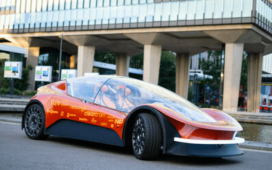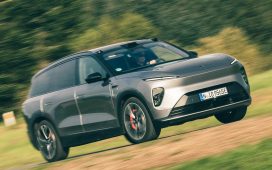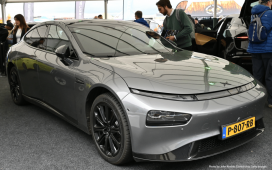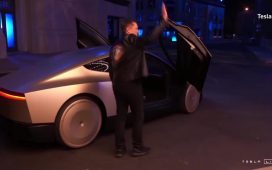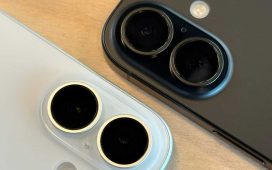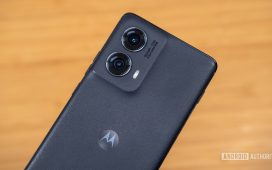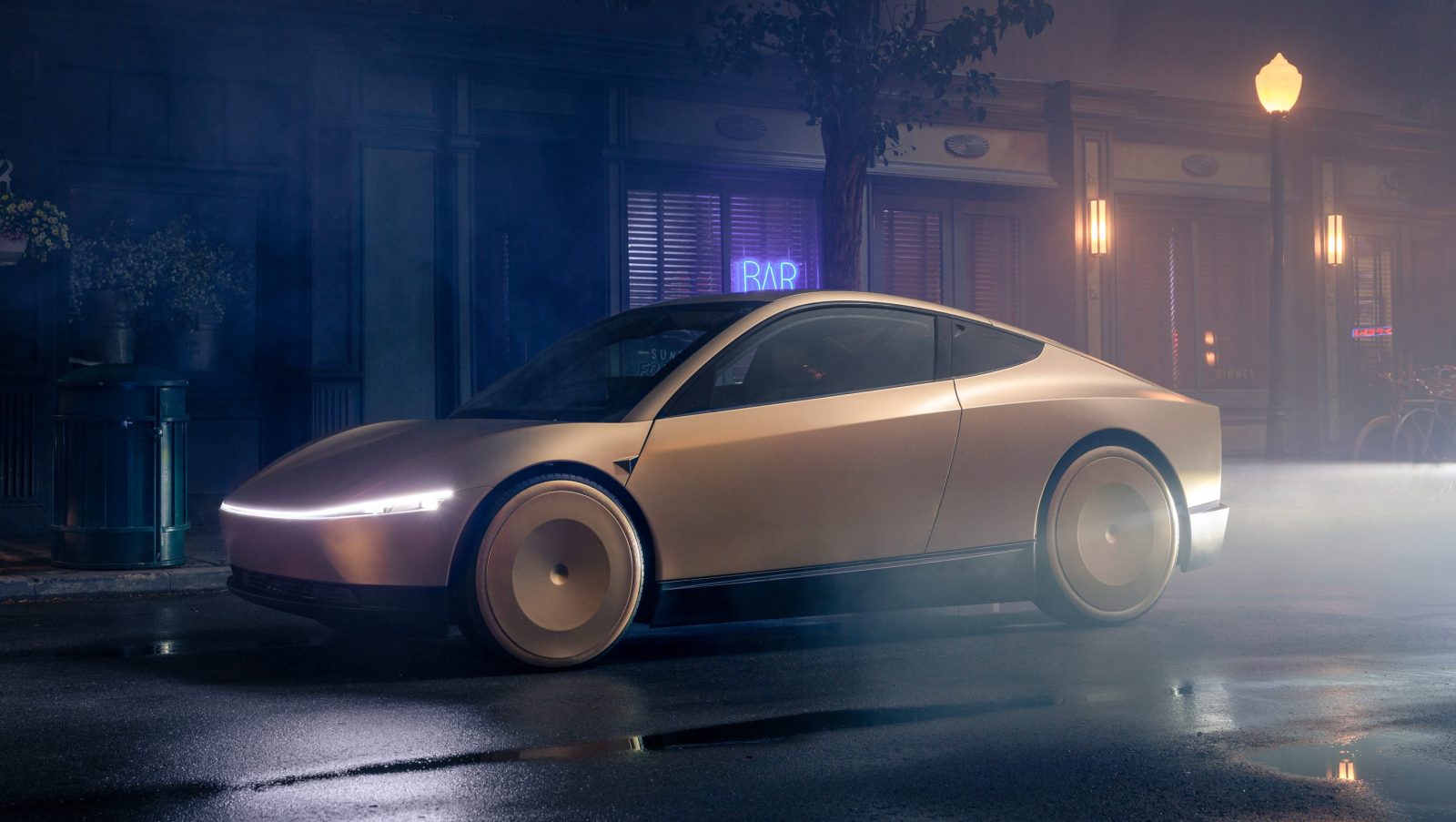
Tesla has unveiled a new vehicle called Cybercab; a $30,000 electric robotaxi coming in the next 2 years.
At an event at Warners Bros studios on Thursday night, Elon Musk took the stage to unveil the new vehicle.
Its name is still not clear. Prior to the event, Musk referred to it as both ‘Cybercab’ and ‘Robotaxi’.
Both terms were also used during the event.
Tesla only has a very short web page about the new vehicle (and Robovan) on its website and it refers to it as ‘Robotaxi’:
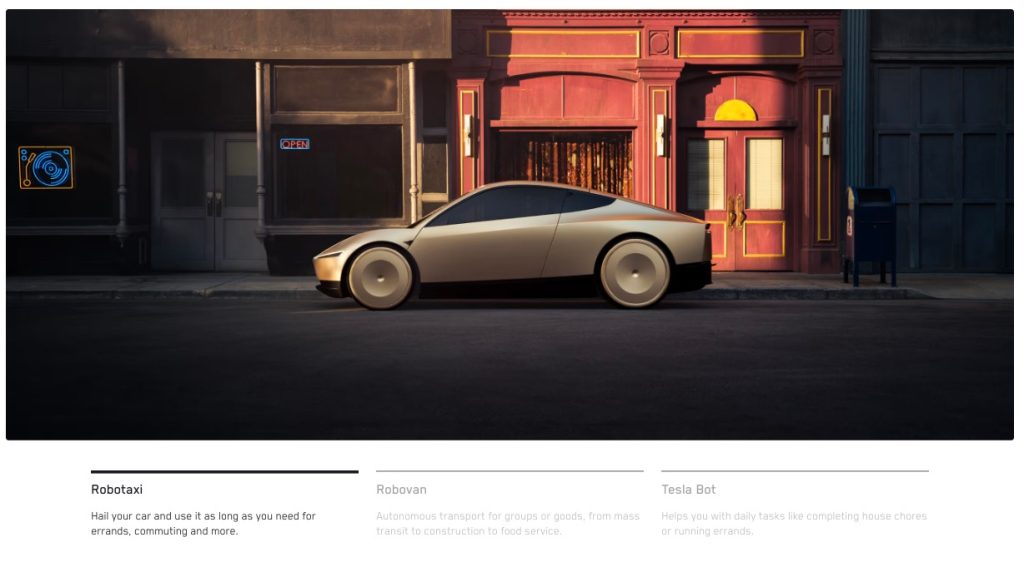
Despite having an actual launch event for the vehicle, the details are very limited. There are basically none on the previously mentioned webpage, so we have to go only for what was said and seen at the event.
As expected, the vehicle is a 2-seater with butterfly wing doors and no steering wheel or pedals.

Most, if not all prototypes shown appeared to have a gold finish. It doesn’t have a rear window.
Musk said that Tesla had 20 Cybercabs at the event. He also mentioned having “50 autonomous vehicles” at the event, but that number seemed to include Model Y vehicles.
Here are a few images of the exterior of the Cybercab that Tesla has released:
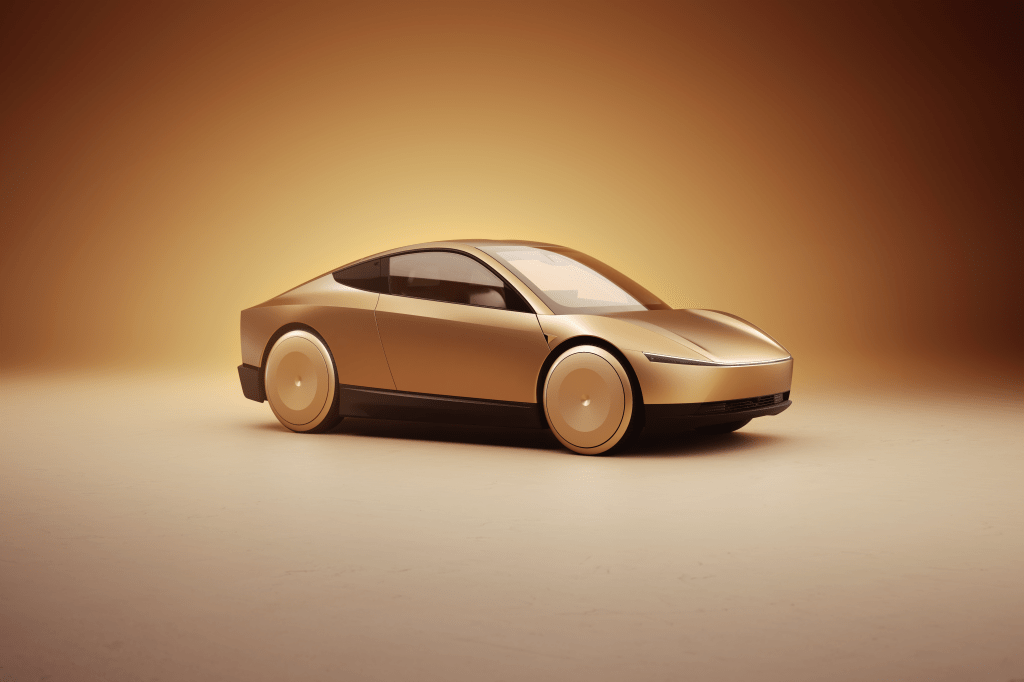
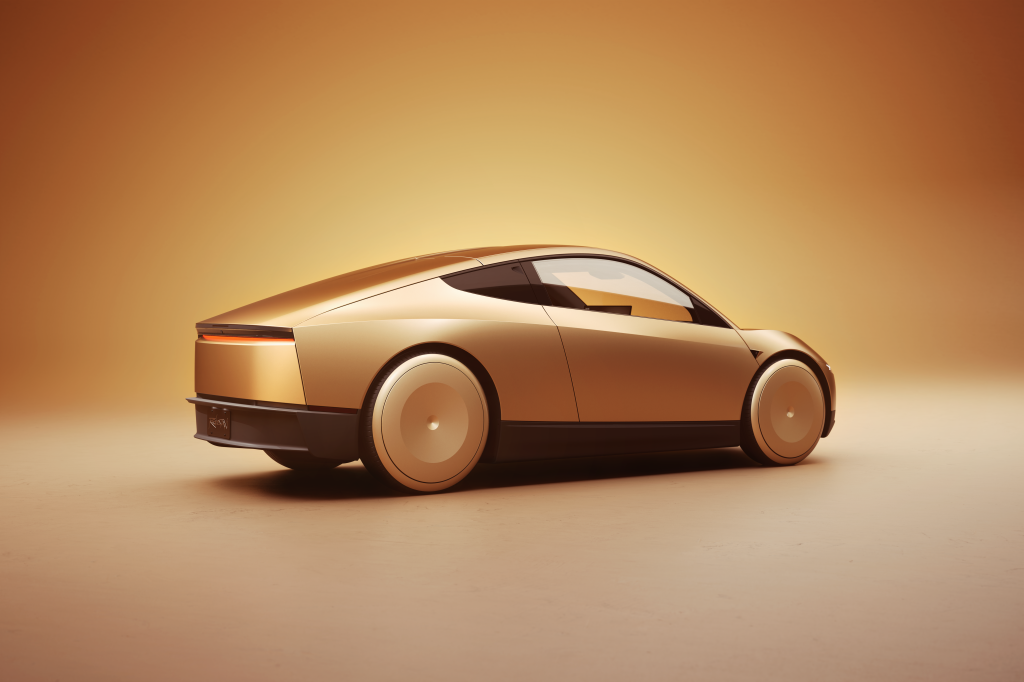
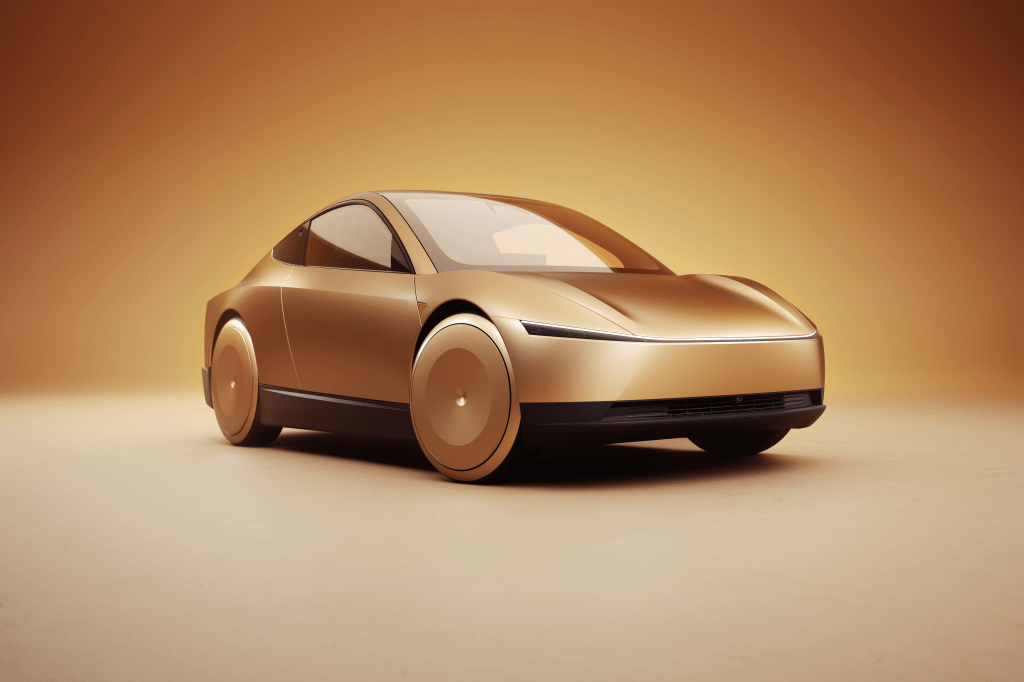
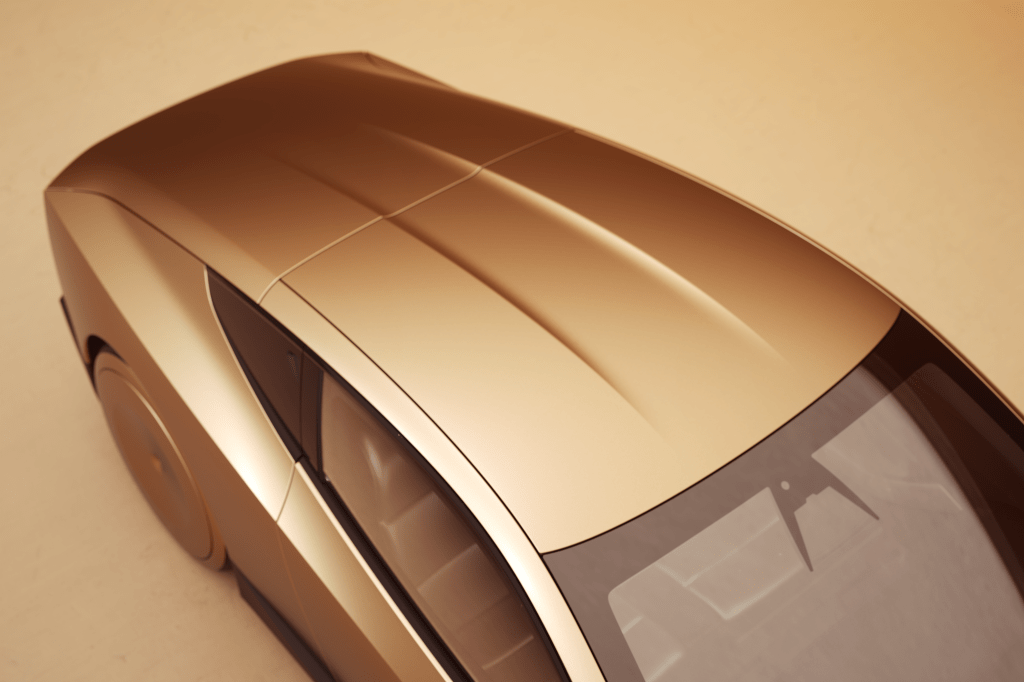
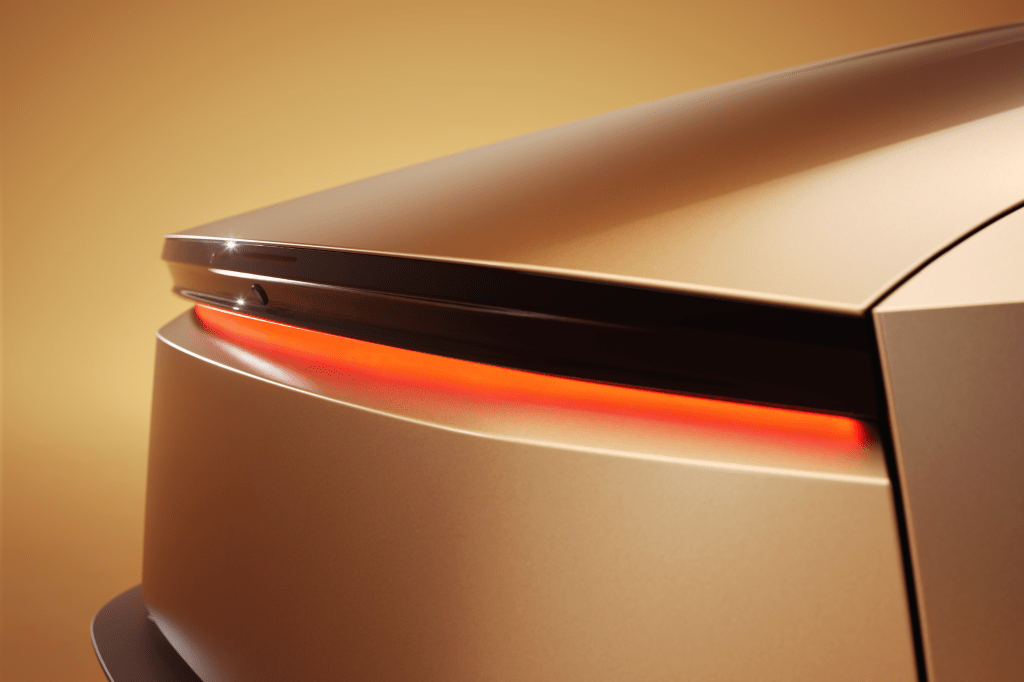
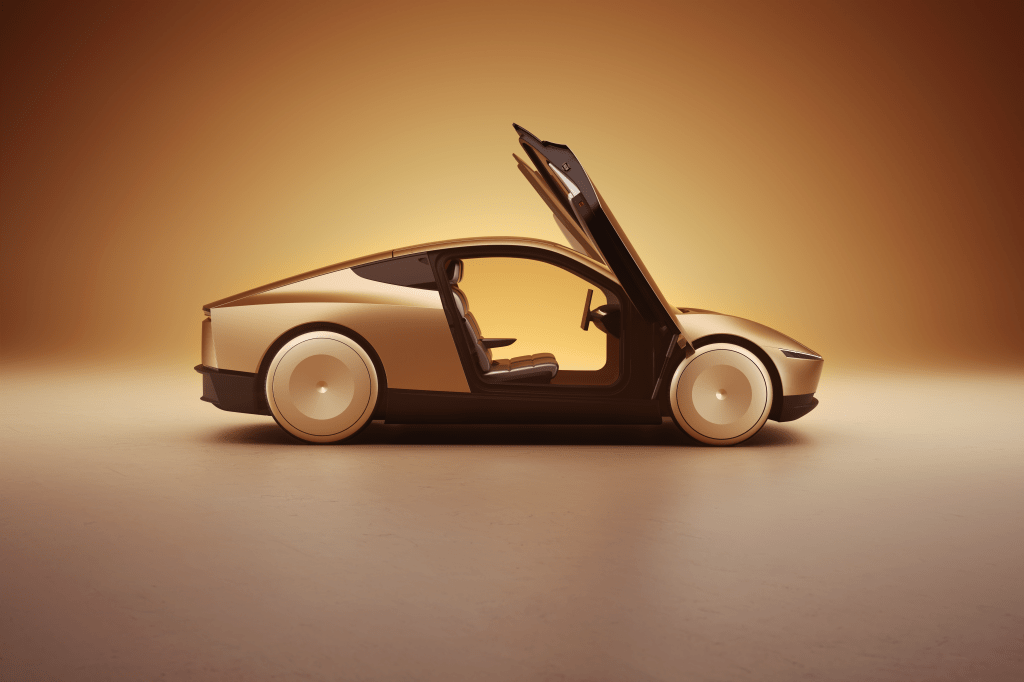
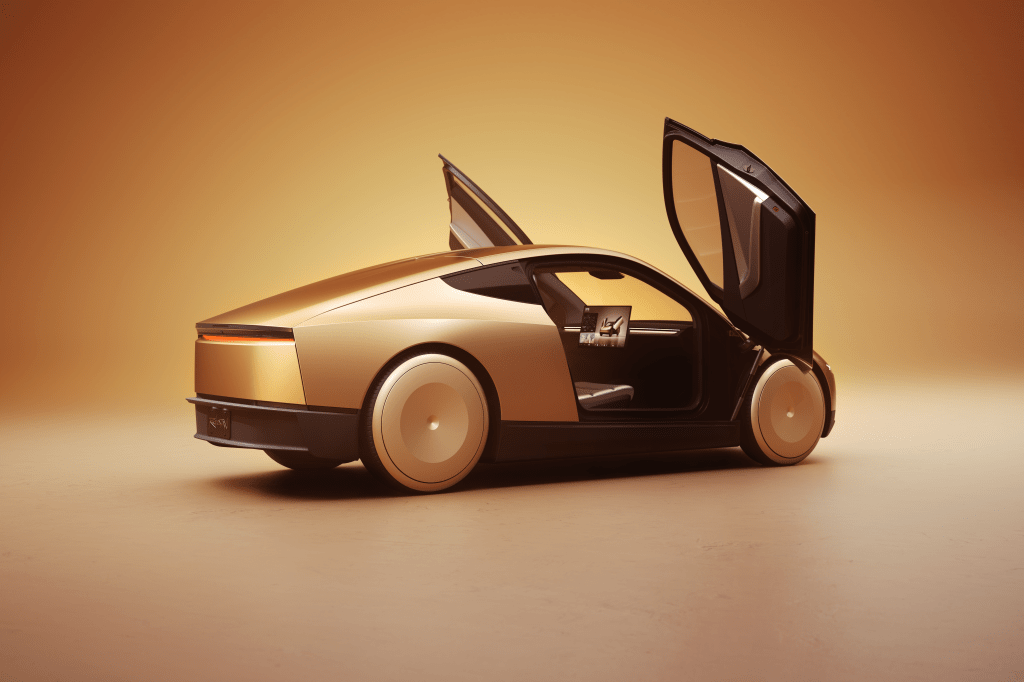
When it was driving around at the event, it seemed to have matrix headlights embedded into a front light bar similar to what is found on the Tesla Cybertruck.
It’s only a two-seater, but at least, it looks like it has a very large hatchback trunk:
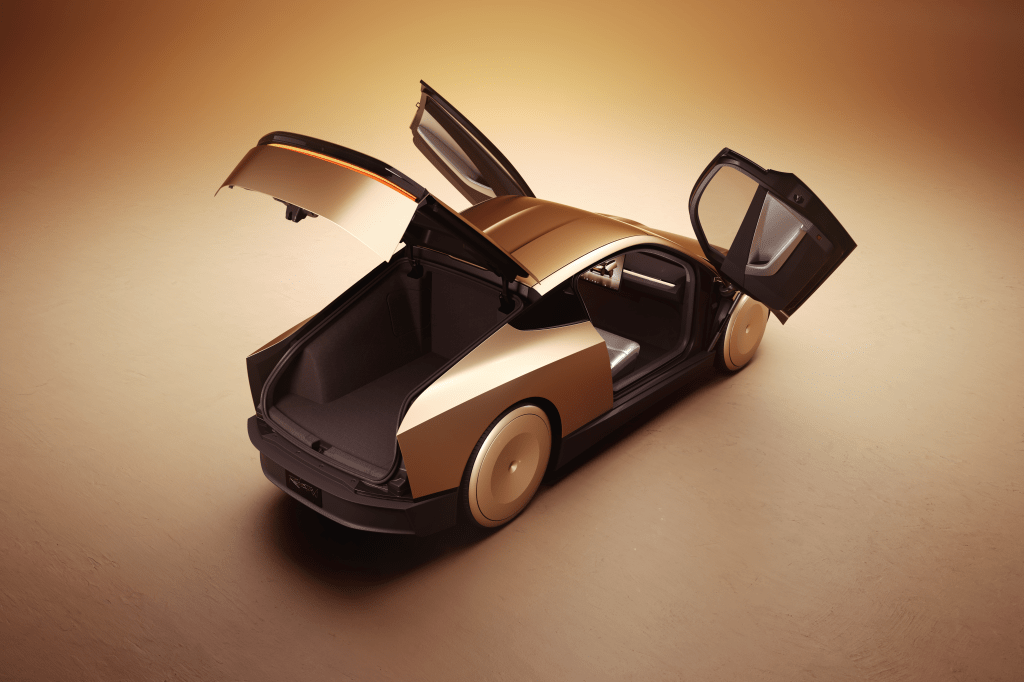
The Cybercab will be the first Tesla vehicle to feature wireless induction charging as standard. As we previously reported, the Cybertruck appears ready to receive a wireless charger, but it will likely be a retrofittable option in the future.
Wireless charging has been around in consumer electric vehicles for a long time, but it never really took off. However, it is believed to become a more prominent feature with self-driving vehicles as it enables the vehicle to go charge itself without anyone having to plug it in.
Tesla also briefly showed a video of an automated system being able to clean the vehicle.
Here are a few images of the interior of the Tesla Cybercab:
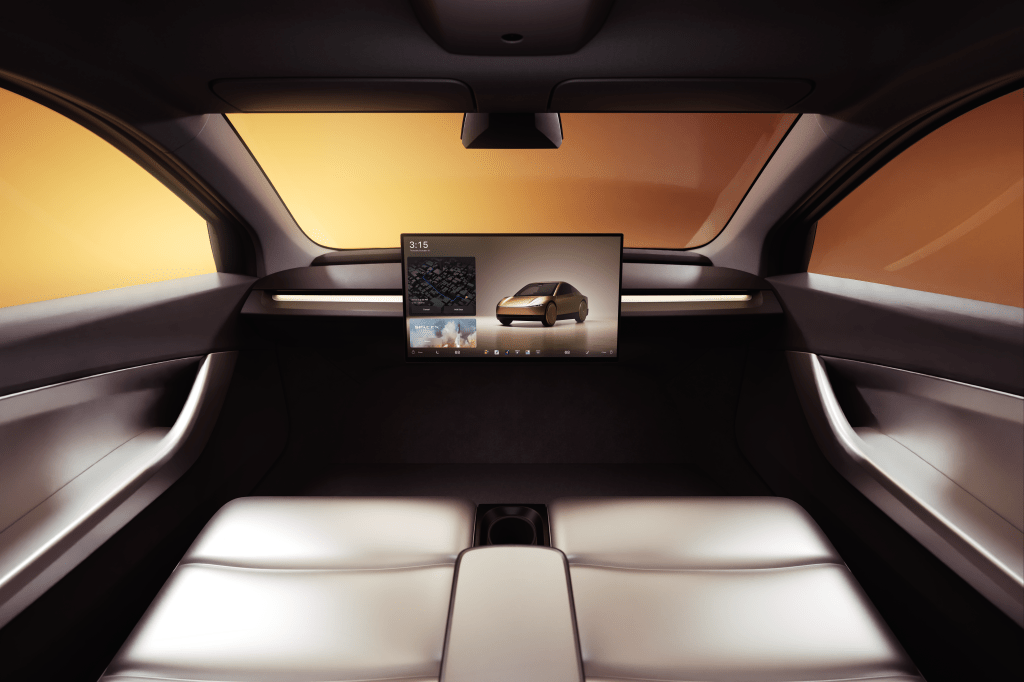
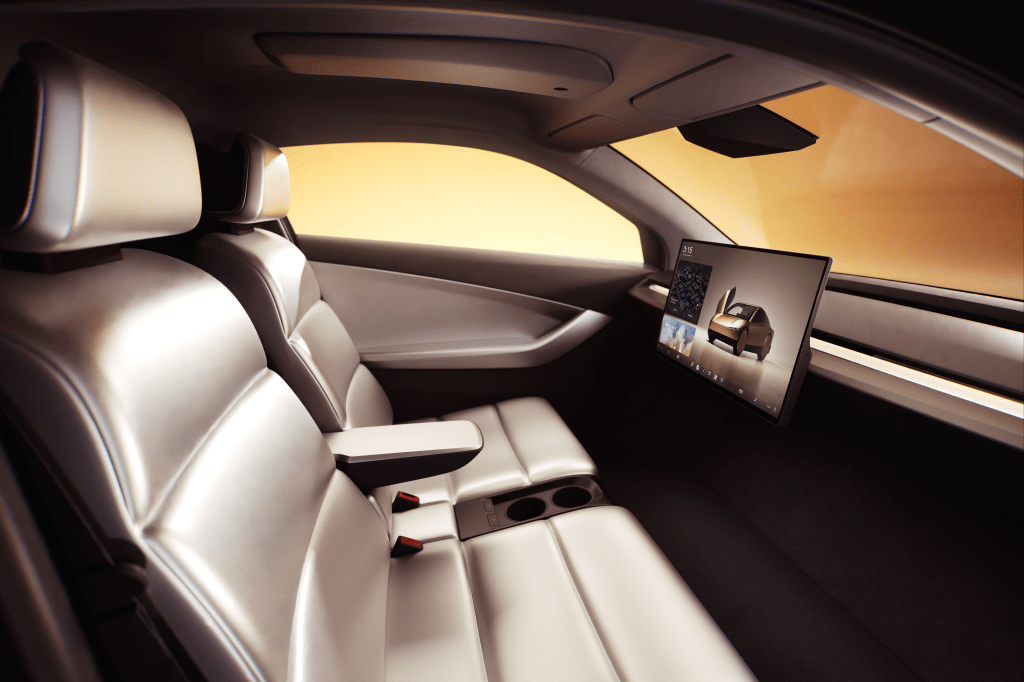
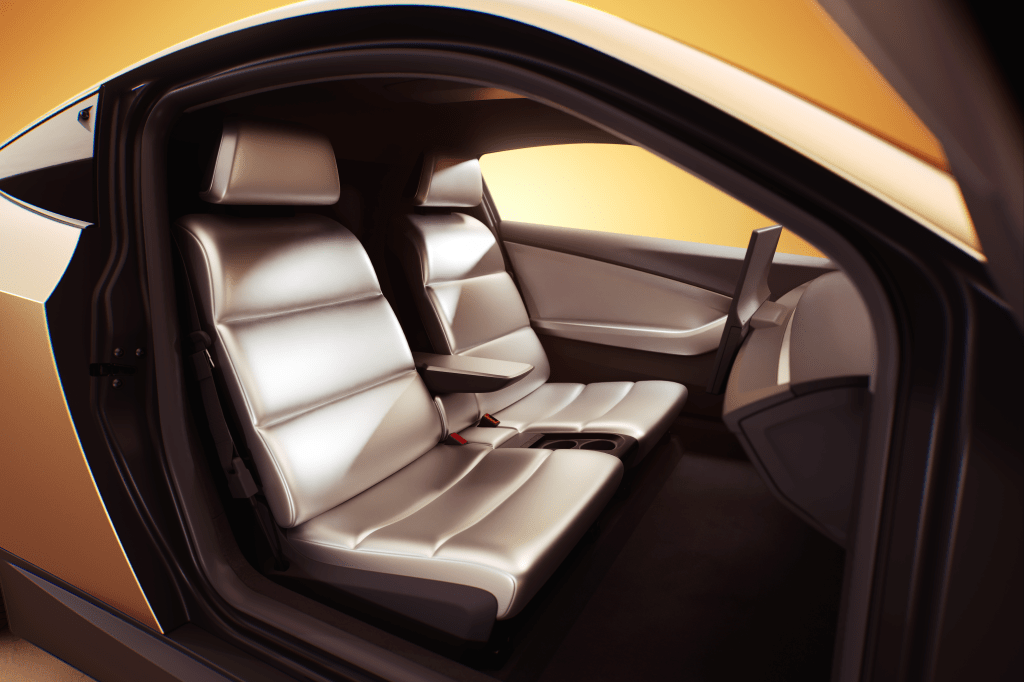
Tesla didn’t release much in terms of specs for the new vehicle. There was no word on the electric vehicle’s range.
Musk mentioned an estimated cost of operation of $0.20 a mile, which appears ambitious.
He also mentioned that consumers will be able to buy it. It won’t be only for an autonomous ridesharing fleet, Tesla Network, which Musk has been hyping for years.
The CEO said that Tesla is aiming to sell the Robotaxi for less than $30,000. As for when it will enter production, Musk said it will come in 2026, but he did acknowledge that he is often wrong with his timelines, and it could come in 2027 instead.
How does the Tesla Cybercar drive itself?
That was the biggest question of the night. Tesla has been selling cars that it claims will become self-driving since 2016, and they have yet to become self-driving.
It doesn’t give much credibility to launching a vehicle without a steering wheel or pedals.
Some Tesla owners who bought Tesla’s up-to-$-15,000 Full Self-Driving package on current vehicles feared that Tesla would shift its strategy with Cybercab, but that doesn’t appear to be the case.
Musk said that Cybercab is equipped with Tesla’s AI5 onboard computer and based on a visual check, it appears to only use cameras, like Tesla’s existing vehicles.
The CEO reiterated that the plan was still to make Full Self-Driving work unsupervised on the current vehicle, which he now thinks will happen next year in Texas and California.
To be fair, he said that it was going to happen next year virtually every year for the past 5 years and the only data available shows that Tesla needs a roughly 500-100x improvement in miles between disengagement before it can make this a reality, and it only was able to do a ~2x improvement so far this year.
The Cybercab would then rely on the FSD system improvements to deliver its autonomous rides.
FTC: We use income earning auto affiliate links. More.


